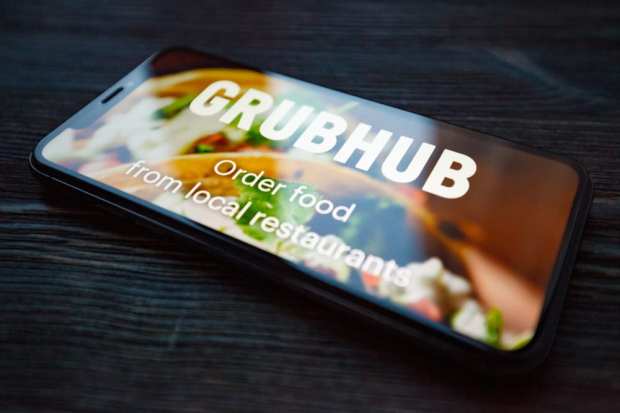Grubhub Pays The Price Of Keeping Its Customers

The year 2020 is off to a rocky start for food delivery platform Grubhub. Shortly after the new year began, rumors started circulating that Grubhub — facing increasingly stiff competition in a crowded food delivery service market — was actively seeking a buyer, as it had seen falling market share and rising costs. Reports indicated that the firm had gone so far as to hire financial advisors to guide it through the potential transition.
The firm publicly denied these rumors — or at least declined to clarify them. Though Grubhub confirmed it had been meeting with financial advisors to explore a number of possibilities, including acquisition, a spokesperson asserted that “there is unequivocally no process in place to sell the company, and there are currently no plans to do so.”
Yet, the rumor mill kick-started again more than a week later, when new data from analytics firm Second Measure indicated that DoorDash had overtaken Grubhub as the number-one food delivery service in the U.S. According to the data, DoorDash got 33 percent of all food delivery sales in the U.S. during 2019. Grubhub captured 32 percent, Uber Eats captured 20 percent and Postmates got 10 percent.
With Grubhub’s latest earnings report out (and showing wider-than-expected losses), it doesn’t seem too far of a stretch to suspect that sales talk will do another run through the rumor mill this week.
Grubhub’s sales were strong for the final leg of 2019, with a 19 percent increase to $341 million from $288 million at the same time last year. That came in ahead of analyst forecasts of $325 million. The platform also saw greater-than-expected growth of its user base, with 23 million users on the platform as opposed to the 18 million enrolled at the end of 2018 — again, ahead of analyst expectations of 22.6 million users. Gross food sales were a beat as well, clocking in at $1.6 billion versus the $1.46 billion forecast.
Not only were users up, but usage increased as well. Daily average grubs rose 8 percent from last year to 502,600, ahead of pre-release estimates of 480,280.
However, bringing new diners onto the platform came at a cost for Grubhub — a steep one, apparently. The firm reported an adjusted earnings loss of $4.2 million, or $.05 per share. That was more than the 3 percent loss analysts expected, and a stark reversal from the end of 2018, when the company reported a profit of $17.6 million. Grubhub noted in its letter to shareholders that, despite the expense, the expenditures to recruit new diners were showing demonstrable positive effects — as the number of restaurants on the platform has more than doubled in the last year and a half.
“Our initiatives are starting to pay off,” said Grubhub Chief Executive Matt Maloney in an interview. “It clearly will take a long time to impact consumer behavior, and it’s starting to work.”
However, “will it work fast enough?” is likely the question Grubhub faces as early 2020 unfolds, and as it continues working to outdraw DoorDash, Uber Eats and Postmates all at once. Unsurprisingly, all three of these main competitors have also invested heavily in the U.S. market in an attempt to be the lord of the dinner delivery platform.
As for the rest of 2020, Grubhub said it couldn’t provide exact earnings guidance, but it did tell shareholders that it is anticipating $100 million for the full fiscal year. As for what it will spend on consumer acquisition and retention, the shareholder letter indicated that this remains an open question.
What is known is that, in the last year, as the market has gotten more crowded, Grubhub not only invested in bringing its customer base home, but increasingly adopted the tactics of its rivals. The firm has struck delivery deals with McDonald’s, Shake Shack and Applebee’s, as well as offered free and low-cost delivery from KFC, Taco Bell and other chains.
Grubhub has attracted some controversy over the last year for adopting the DoorDash and Uber Eats policy of adding restaurants to its platform without any prior agreement. The letter acknowledged that there have been some “minor” complaints as well, most of which were solved when errors on online menus were fixed.
The firm has also been focusing on expanding its innovative range. Last month, Grubhub launched a system for restaurants, stadiums and other food service providers to accept and process pickup orders online.
“We are experimenting, and trying to figure things out,” said Maloney.
Experimenting, however, can be a costly game. As a result of a full lineup of experiments to try and recapture its market share, Grubhub reported a full-year loss of $18.6 million, down from a gain of $78.5 million the previous year.
Adjusted earnings per share were $.79, roughly meeting expectations. Grubhub’s stock price initially went down about 1 percent in after-hours trading, though its stock rebounded fairly quickly and traded about flat thereafter.
